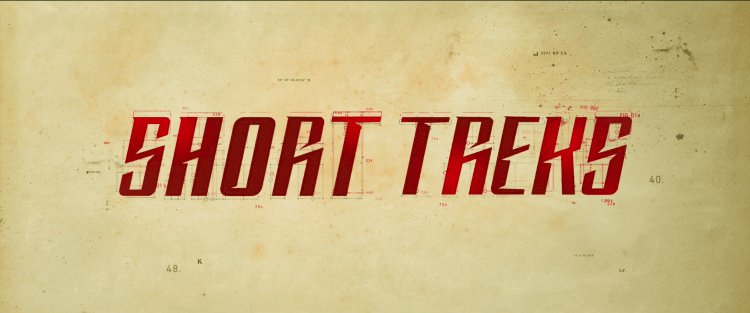
Hello and welcome to the last ‘Final Frontier Friday’ of 2019! We’re bringing the year to a close with a look at one of the two ‘Short Treks’ that debuted earlier this month, specifically ‘Ephraim and Dot’.
Animation is coming to the ‘Star Trek’ universe. As part of executive producer Alex Kurtzman’s mandate to fill the airwaves with ‘Star Trek’ content, he is fulfilling his longstanding desire to expand the franchise into animation, most notably with the upcoming Mike McMahan-created series ‘Star Trek: Lower Decks‘, which is expected to debut sometime in 2020. Of course, it’s not the first time ‘Star Trek’ has ventured into the animated realm (‘Star Trek: The Animated Series‘ reunited much of the original cast and creative staff for the franchise’s first of many revivals in 1973), but it has always been first and foremost a live-action affair.
As part of the lead up to ‘Lower Decks’ and other animated endeavors, it was decided that two of the six installments in the second season of ‘Star Trek: Short Treks’ would be animated. While neither of these shorts has any ties to the upcoming animated projects, save for the fact that they are animated. The purpose of this was to give viewers a sense of the possibilities that animation brings to the table.
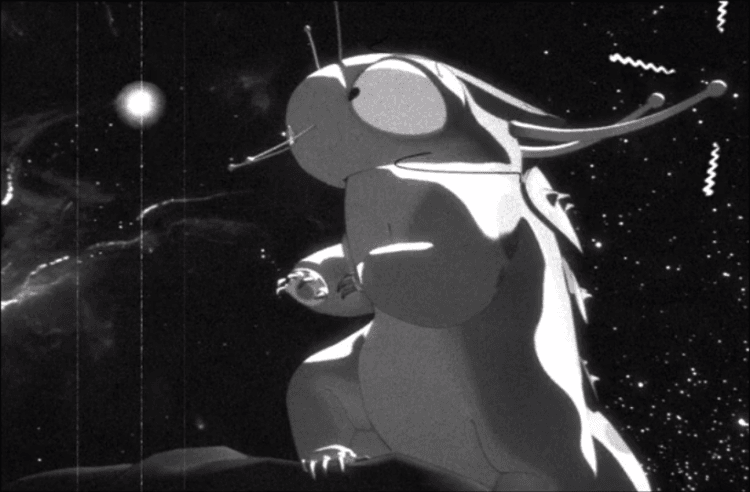 The “first” of these (alphabetically, at any rate – the two were released simultaneously on CBS All Access) and the subject of today’s column is ‘Ephraim and Dot’. The short is directed by Michael Giacchino, best know to ‘Star Trek’ fans for scoring the Kelvin movies. And as befits an installment helmed by a composer, it relies in no small part on music (also by Giacchino) to drive and complement the story, as the dialog is virtually non-existent.
The “first” of these (alphabetically, at any rate – the two were released simultaneously on CBS All Access) and the subject of today’s column is ‘Ephraim and Dot’. The short is directed by Michael Giacchino, best know to ‘Star Trek’ fans for scoring the Kelvin movies. And as befits an installment helmed by a composer, it relies in no small part on music (also by Giacchino) to drive and complement the story, as the dialog is virtually non-existent.
Presented in the style of an educational film, the short begins by introducing us to the titular Ephraim, a tardigrade in search of a place to lay her eggs. As she prepares to bury them on the surface of a meteor, she notices something. It’s the Enterprise, which has just dropped out of warp. Ephraim investigates the ship and tries to dig into the hull. She is eventually spotted by Dot – one of the DOT-7 worker robots introduced in ‘Such Sweet Sorrow, Part 2‘ – who dislodges her from the ship with an electric shock and returns to the ship through a hatch. Dot pursues the “intruder”, who by pure luck finds herself in the warp core, which she deems a suitable location to deposit her eggs. Suddenly Dot arrives and chases Ephraim through the ship, eventually succeeding in jettisoning the tardigrade just before the ship goes to warp. But being a tardigrade, Ephraim is able to travel through the mycelial network, which allows her to easily keep pace with the Enterprise.
This cat and mouse game intersects with the events of several classic episodes, including ‘Who Mourns for Adonais?’ and ‘The Savage Curtain’ before eventually culminating in the battle in orbit of the Genesis Planet depicted in ‘Star Trek III: The Search for Spock‘. While putting out fires, Dot notices Ephraim pass by. In engineering, the mother tardigrade is excitedly reunited with her eggs, but of course Dot catches up. The two fight and the tardigrade is once again jettisoned. As the ship’s self-destruct countdown proceeds, Dot finally notices the eggs. Ephraim, meanwhile, approaches the ship yet again, but the Enterprise explodes before she can get on board. Noticing Dot among the wreckage, Ephraim prepares to attack, stopping when Dot opens up a compartment containing Ephraim’s eggs just as they begin to hatch. The newly minted tardigrade family then fly away in the mycelial network and the credits roll.
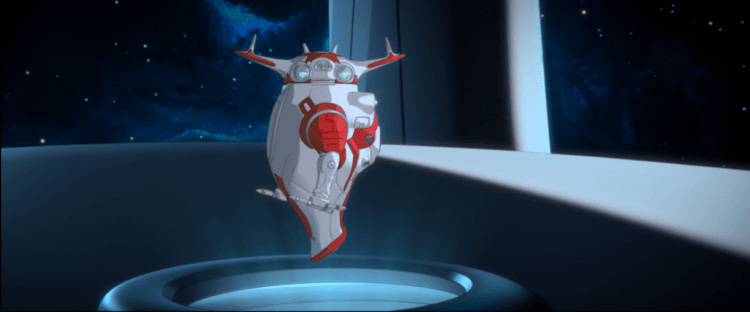 Let’s be clear on one point right upfront. Yes, like all other ‘Short Treks’, it is reasonable to assume that this is meant to be canon. Unlike virtually everything else in the ‘Star Trek’ canon, though, it’s clear to me that this is not meant to be taken entirely literally. That being the case, I’m not going to harp on things like the order of the referenced episodes (‘The Naked Time’ aired and thus took place LONG before ‘Space Seed‘, for example) or the fact that the Enterprise’s interior is never updated to match the ‘Motion Picture’ configuration. But don’t think that means I won’t have plenty to talk about, because this one… The short wasn’t bad, but it just was not working for me.
Let’s be clear on one point right upfront. Yes, like all other ‘Short Treks’, it is reasonable to assume that this is meant to be canon. Unlike virtually everything else in the ‘Star Trek’ canon, though, it’s clear to me that this is not meant to be taken entirely literally. That being the case, I’m not going to harp on things like the order of the referenced episodes (‘The Naked Time’ aired and thus took place LONG before ‘Space Seed‘, for example) or the fact that the Enterprise’s interior is never updated to match the ‘Motion Picture’ configuration. But don’t think that means I won’t have plenty to talk about, because this one… The short wasn’t bad, but it just was not working for me.
Indeed, while it would be easy (a little too easy, really) to be “that guy” complaining about continuity stuff, the problems I had were more important than cataloging all unimportant details that bothered me more than they should have. See, at the end of the day the short has a pretty fundamental logic problem that… I will concede that even this may err on the side of “unspeakably nerdy nitpick”, but I’m not going to pretend that it hasn’t been bothering me since the first time I watched ‘Ephraim and Dot’. The events of the short span roughly a twenty-year period, from the early days of Kirk’s first five-year mission through to the Enterprise’s destruction in orbit of Genesis. In that time, the Enterprise was on the receiving end of a comprehensive refit (something acknowledged in short, as the exterior shots reflect the changes introduced in the redesign).
‘Star Trek: The Motion Picture’ – in which the refit Enterprise is introduced – makes no bones about the fact that the ship was basically rebuilt from the ground up. It’s not just a bit of background trivia, but a fairly important plot point as it relates to just how out of practice (and specifically unfamiliar with the “new” Enterprise) Kirk is. The problem with ‘Ephraim and Dot’ then, is that it expects me to believe that in the course of almost completely rebuilding the ship, no one noticed a pile of tardigrade eggs in the engines? Hell, forget the refit. It’s asking us to believe that in the course of TWENTY YEARS none of the people who did any sort of repair or maintenance work on the engines happened to notice the PILE OF ALIEN EGGS?
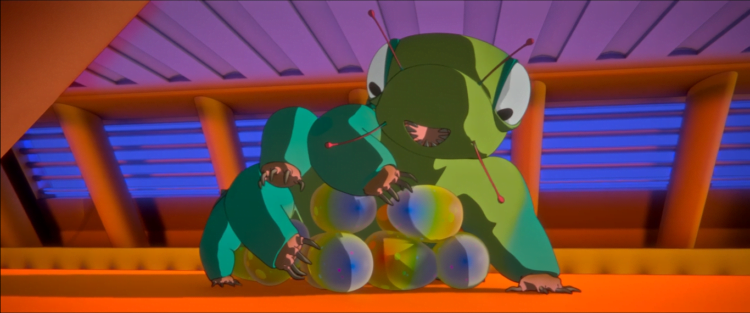 I’m sorry, but that dog won’t hunt, monsignor.
I’m sorry, but that dog won’t hunt, monsignor.
I’m also honestly not crazy about the existence of the DOT-7 worker robots (I’m not saying it doesn’t make sense that such a thing would exist, but this is yet another example of ‘Discovery’ awkwardly grafting some piece of tech into the timeframe of the original series that may not explicitly conflict with established ‘Trek’ continuity but that makes less sense the more you think about it – an issue that would have been avoided had they just set the show post-‘TNG’ to begin with) but that’s not an issue with this short. If I’m going to lodge that complaint against anything, it would be the season finale of ‘Discovery’.
Beyond any of that, though, one of the stated reasons for doing a pair of animated ‘Short Treks’ (this and ‘The Girl Who Made The Stars’) was basically to justify the existence of animated ‘Star Trek’. I’m paraphrasing, but the gist of Alex Kurtzman’s explanation when they were announced was that they were intended at least in part to show off what ‘Star Trek’ can do in animation ahead of ‘Lower Decks’ and the other, still untitled animated spinoff they have in the works. And I’m not sure either of them actually succeeded at that. To be clear, I’m not someone to whom you really need to “sell” the idea of animated ‘Star Trek’ (I proudly own ‘Star Trek: The Animated Series’ on VHS, DVD, and Blu-ray, thank you very much), but I can’t imagine these shorts convincing anyone who might be on the fence.
Aside from the inclusion of Michael Burnham, there really isn’t anything particularly ‘Star Trek’-ish about ‘The Girl Who Made The Stars’ (it’s an animated riff on a folktale), and ‘Ephraim and Dot’ is basically one of those animated romps Warner puts out to celebrate a Batman anniversary by way of a mediocre ‘Tom & Jerry’ cartoon.
As I said, I have no bias against animated ‘Star Trek’. It’s all in the execution. ‘TAS’ was basically the original series but shorter and without the former’s budget-imposed restrictions on environment or creature design. While neither of these were bad, they also didn’t strike me as particularly ‘Star Trek’. ‘Ephraim and Dot’ in particular was just too cartoony for my taste (again, within the specific context of a ‘Star Trek’ production). Rather than sell me on the idea, it actually left me more nervous (perhaps irrationally so) about ‘Lower Decks’, which was basically the opposite of the producers’ stated intention.
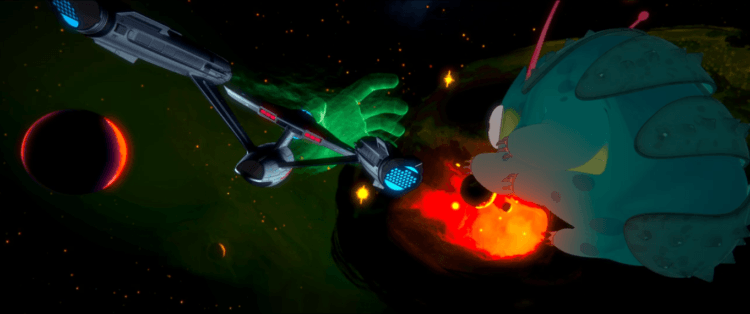 In fact, the music especially didn’t help with that feeling of over the top cartoonishness, but the upside of the short being scored by Michael Giacchino is that I’d completely forgotten what any of it sounded like within an hour or two. I was able to avoid much talk of Giacchino’s music when I revisited ‘Star Trek 2009’ earlier this year, a choice I made partly because I had more than enough to say without getting into the music, but also because my distaste for the man’s work is likely to be one of the more controversial (or at least minority) opinions I’ve expressed in this column. But there’s just no avoiding it.
In fact, the music especially didn’t help with that feeling of over the top cartoonishness, but the upside of the short being scored by Michael Giacchino is that I’d completely forgotten what any of it sounded like within an hour or two. I was able to avoid much talk of Giacchino’s music when I revisited ‘Star Trek 2009’ earlier this year, a choice I made partly because I had more than enough to say without getting into the music, but also because my distaste for the man’s work is likely to be one of the more controversial (or at least minority) opinions I’ve expressed in this column. But there’s just no avoiding it.
And I want to be clear, I don’t think Giacchino is a bad composer per se, but I do find him greatly overrated. Not unlike JJ Abrams (with whom he frequently collaborates), Giacchino is more of a remix artist than a great talent in his own right. What I mean by that is that his best work tends to be arrangements of material by other, better composers. Also like Abrams, he’s a stylistic chameleon. It’s why he was as good a fit as he was for movies like ‘Rogue One‘ and ‘Jurassic World‘ – He’s no John Williams, but he can do a passable imitation. And this makes perfect sense when you remember that he got his start scoring licensed video games. But his original works are another matter, one that I’ve always found to be fine in the moment, but on the whole just sort of blandly forgettable. (And before anyone pops into the comments to hold up the ‘Incredibles’ theme as a defense of Giacchino’s original compositions, go listen to the main theme from ‘On Her Majesty’s Secret Service’ and rethink your argument.)
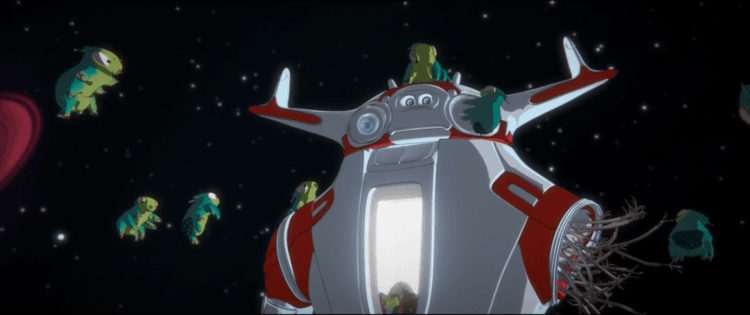 All that said, it’s a ‘Short Trek’. And while it hasn’t always been the case in practice, these shorts are meant to allow the powers that be to experiment a bit, to play around with storytelling approaches that wouldn’t necessarily fit with ‘Discovery’ or ‘Picard’ (or, for that matter, with ‘Lower Decks’). And the thing about experiments is that they don’t always work out the way you hope. But in television as in life, it’s better to try something new and fail than to not try at all.
All that said, it’s a ‘Short Trek’. And while it hasn’t always been the case in practice, these shorts are meant to allow the powers that be to experiment a bit, to play around with storytelling approaches that wouldn’t necessarily fit with ‘Discovery’ or ‘Picard’ (or, for that matter, with ‘Lower Decks’). And the thing about experiments is that they don’t always work out the way you hope. But in television as in life, it’s better to try something new and fail than to not try at all.
But that’s enough of my ramblings. What did you think of ‘Ephraim and Dot’? Let me know in the comments and be sure to check back in the new year for the next ‘Final Frontier Friday’!
